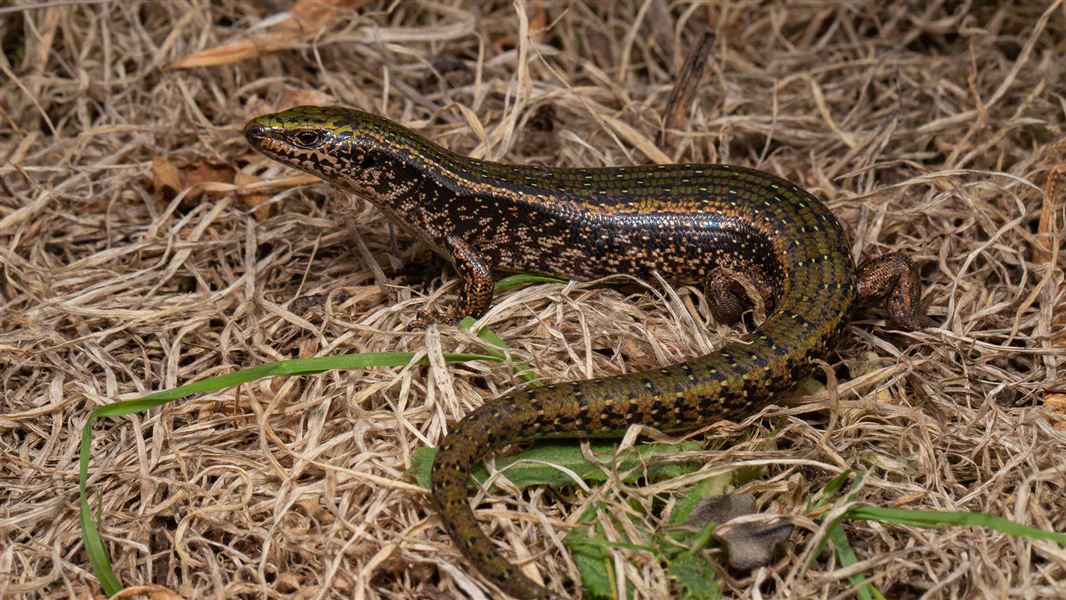Date: 18 April 2024
An urgent assessment by an independent expert panel has seen Canterbury spotted skink reclassified from Nationally Vulnerable to Nationally Critical – the last step before extinction.
DOC technical advisor Lynn Adams says there’s a perfect storm of issues contributing to the skink’s decline.
“We thought there were secure populations of Canterbury spotted skinks in the Ō Tū Wharekai Ashburton Lakes basin and surrounding ranges, but recent DNA sequencing has proven these populations were misidentified and are in fact another type of related lizard.”
“This discovery means the Canterbury spotted skink’s overall population is considerably smaller than our previous estimates.”
“To make things worse, research on our monitored populations predict a 70 per cent decline over the next thirty years in Christchurch, Banks Peninsula and Kaitorete Spit. In fact, many of these populations are already functionally extinct. This decline is likely to also be occurring in other populations that we’re not monitoring in the Canterbury foothills.”
“An exception to this worrying trend is the small but thriving population contained within a small predator-proof fence on Banks Peninsula, although the fence is subject to damage caused by earth movement.”
Canterbury spotted skink’s main predators are mice, hedgehogs, weasels, rats, stoats, and cats.
“Small populations on the tiny islands off Banks Peninsula aren’t secure because they’re too small to sustain large lizard populations as well as being within swimming range of stoats and rats from the mainland.”
“We need to better understand populations in the Canterbury foothills, which are largely unknown but likely facing the same threats as other skink populations.”
Predator proof fences are considered the best medium-term way to protect the remaining Canterbury spotted skink populations while long-term solutions are found.
“Mouse-proof fences in particular are key to creating skink strongholds, so they don’t disappear forever,” Lynn Adams says.
More information on the urgent reassessment Canterbury spotted skink is available on the New Zealand Threat Classification (NZTCS) database.
More information on the threat classification system and a list of threat classification reports is available on DOC’s website.
Background information
The Canterbury spotted skink is one of New Zealand’s larger skink species and can grow up to 24 cm long. They like to feast on insects, spiders, different fruits and are even known to consume smaller skink species.
The skink’s camouflaged appearance and timid temperament makes it very tricky to spot.
Most Canterbury spotted skink populations are on private and council land.
Contact
For media enquiries contact:
Email: media@doc.govt.nz
